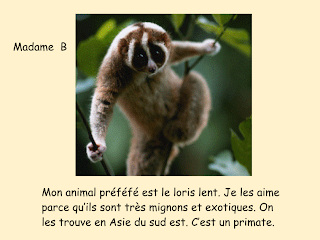I'ts been a bit quiet on the BTTDB front as, in St George mode, I try to fend off a variety of fire-breathing dragons. Survival first......
Still, my daily wallow in the bath gave rise this week to a bit of inspiration. We had been discussing in a Year 10 class how we might best make a joint presentation, à la Powerpoint.
There was talk of adding a slide and airdropping the presentation to the next student, which seemed a long and drawn out solution.
We first decided to gather/create the info and images on individual word docs which would be sent to me to compile into a powerpoint. Not a brilliant solution as I end up doing too much of the work and management of documentation.
So after a couple of classic BTTDB 'false' starts (I prefer to see them as an essential part of the learning process, and far from a waste of time) I suddenly thought of Google docs and the 'presentation' function which seemed to be a slightly simplified clone of Powerpoint.
 The task was to make a slide illustrating your favourite animal and why you liked it. The task required the students to incorporate direct object pronouns (Je les aime parce que.......) and allowed for differentiation as there was a minimum requirement but those that chose to could add as much as they liked.
The task was to make a slide illustrating your favourite animal and why you liked it. The task required the students to incorporate direct object pronouns (Je les aime parce que.......) and allowed for differentiation as there was a minimum requirement but those that chose to could add as much as they liked.I started a 'presentation' Google doc and shared it with all the students. They very quickly got onto it and began working on their slide. It was interesting to observe the motivating factor of being able to see what everyone else was doing. Of course this quickly led to the realisation that they could not only 'chat' while they were doing it but also edit each other's slides. This gave rise to some sabotage initially before the novelty wore off. Some students realised that if they made their slide from a screen shot they'd made from Powerpoint, then the content couldn't be edited by others. This is both an advantage and a disadvantage as the language can't be added to or modified once we go through the slides together to look at them critically.
The only drawback to using this Google 'presentation' doc is that, unlike Powerpoint, there doesn't seem to be a voice recording function. I would like everyone to have included a soundfile of themself reading their text aloud. That would've been fun and made it an even better task. I guess they can record themselves in some other way and insert the sound file but it's much easier if it's a one-click operation.
Here's the link to the presentation. Hope it works. It's a work in progress as we haven't reviewed it yet and some students are yet to finish.
Now for a weekend of culture. There's so much happening here with films (Film Fest) and concerts that I'll have a hard time deciding what to go to.........
Vivement ta visite!!
It would be nice to incorporate some intercultural component into this sort of activity and I'm already thinking of ways we could do this.
ReplyDeleteI am really pleased you have had the chance to write down the steps you and your students took to arrive at a piece of collaborative slide show on animals: steps forward and back, students playing around pushing a little bit the boundaries and then coming back together to take the project to completion. Great stuff!
ReplyDeleteI would love to watch it but you will need to share it with me. Sharing with "Anyone with the link" could also be a good option.
There are a few ways to incorporate some voice recordings in a google presentation:
- the first one consists of going all google, that is using Chrome as the default browser and adding the voice comment app. The Free Tech for Teachers blog features an how to video for google documents, I have tried it with a slide and a google presentation, it would be something worth playing with to see how it behaves
- another solution consists of recording the commentary with a cloud service like Audioboo or SoundCloud (I favor the latter at the mo, and no time restriction), share the sound file so that anyone with the link can listen and copy the link in the presentation.
I am currently playing with QR code to embed sound on real paper posters for the Auckland Langsem: it consists of converting the sound file URL to a QR code (I use this generator http://goqr.me/ ), then download it (it is a .png, that is an image file) to print it and stick it on the poster. Use a tablet or a smartphone QR reader code to flash and hear the commentary.
How has your week end of culture been? It sounds fantastic, let me know!
and here is the link to the Free Tech for Teachers' blogpost I mentioned but forgot to add:
Deletehttp://www.freetech4teachers.com/2013/04/how-to-add-voice-comments-to-google.html#.UhCea2SSBu8
Thanks for the feedback about sharing the link. I've duly changed the privacy settings to 'anyone who has the link' so you should be able to access the presentation now. We've been editing it a bit today but it's really just a quick activity not intended to be lingered over. Fun though...
ReplyDeleteAnd thanks for the Free Tech for teachers link. I'll have a wee look at that soon.
^..^
=+=